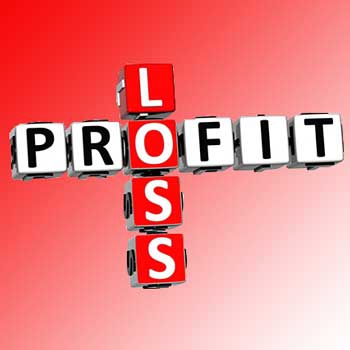The Focus - Our Tax E-Newsletter |
Net Operating Losses: Pre vs. Post Tax Reform

Do you expect your business to have a loss in 2018, or in the future? The Tax Cuts and Jobs Act (TCJA) passed on December 22, 2017 significantly changed the tax code, with nearly every business and individual affected. It is important to be aware of the impact the TCJA had on the treatment of both corporate and individual Net Operating Losses (NOL).
A corporate NOL occurs when a company's expenses exceed its revenues during a tax period. If your entity has been set up as a C Corporation, the NOL is utilized at the corporate level. However, if your entity is an S Corporation or a Partnership, the loss passes through to the individual owning the entity and recognized on that individual's personal tax return. While the TCJA changes differ slightly for corporations and individuals, the examples listed below relate to nearly all taxpayers.
Prior to the TCJA, the treatment of an NOL was relatively simple for Federal purposes. If you experienced a loss during the current period, you had the opportunity to forgo the carryback period and carry the loss forward up to 20 years to offset future income. If a taxpayer preferred to carry the loss back, the NOL was applied to the second preceding tax year first to offset up to 100% of their previously taxed income, most likely getting a refund of the monies that they previously paid to the government. If there was not enough taxable income in the second preceding tax year to fully use the loss carried back, the remainder of the NOL could offset taxable income from the first preceding tax year, and the remainder of the NOL would then be carried forward for up to 20 years.
If you currently have an NOL carrying forward, the old tax law still applies for losses generated prior to 2018. However, the TCJA provided a number of changes to the carryback/carryforward provisions and set up a series of limitations on utilizing an NOL generated in 2018 and beyond.
The new TCJA carryback/carryforward provisions eliminated the ability to carry back losses two preceding tax years (an exception could apply for certain farming businesses and insurance companies), forcing taxpayers to carry their NOLs forward to offset future income. On the other hand, NOLs will no longer expire after 20 years. A taxpayer has the ability to carry an NOL forward indefinitely.
The most significant TCJA change put into effect is that an NOL is now allowed to only offset up to 80% of a corporation or individual’s taxable income. From a corporate standpoint, it is very common for a C Corporation to experience a loss in the first few years of existence. In the past, the company had the ability to build up an NOL during their initial tax years, offsetting their income once they were profitable until the NOL was fully absorbed. During this stage, the company would not incur any tax, allowing them to reinvest their monies back into the company.
Beginning in 2018, the company will still have the ability to build an NOL, but as soon as the company is profitable the NOL can only offset 80% of the taxable income. As a result, business owners will now incur tax on the remaining 20% of their income. This change could hurt new and struggling businesses, eliminating their ability to avoid paying taxes and reinvesting that money back into the company to help grow their business.
In addition to the changes listed above, there is another significant change for noncorporate taxpayers. In the past, as long as a taxpayer had basis and there were no passive activity limitations, the shareholder of an S Corporation or partner of a partnership had the ability to deduct the full loss passed through to them. The amount of the loss would then not matter.
Under the rules of the new TCJA an "excess business loss" limitation was instituted. A ceiling was placed on the allowable amount of a pass-through loss. Individual taxpayers are allowed to deduct a trade or business loss up to $250,000 if filing single, or $500,000 if filing married joint. Losses in excess of the limitations are disallowed in the current tax year, then carried forward as an NOL.
A number of factors go into calculating an NOL at both the corporate and personal level. If you would like more information on how the TCJA will impact your current or projected future NOL, please feel free to contact your Dermody, Burke & Brown tax advisor to discuss this or any other tax matter in greater detail.
The information reflected in this article was current at the time of publication. This information will not be modified or updated for any subsequent tax law changes, if any.
